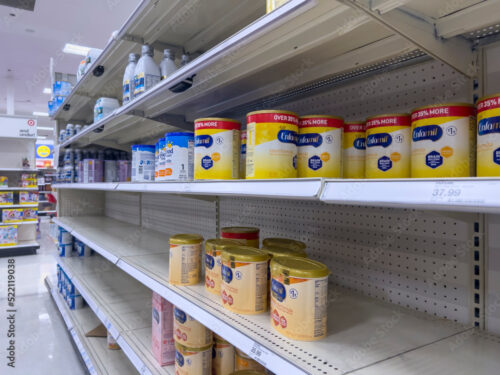VERTICAL FOCUS: Baby Supplies
Changing the Diaper Market
Despite supply chain disruptions, raw material shortages, and inflation, innovation is thriving in the baby diaper market and new brands continue to be born.
Although the United States is a mature market for diapers, a Euromonitor report still predicts modest growth for baby diapers over the next five years, driven by disposable pants. Most of the growth today is driven not by volume but by price because of inflation, says the report.
The supply chain has proven to be one of the most pressing challenges for young diaper brands. “The pandemic, raw material availability and fluctuating prices created a constant flux,” says Sergio Radovcic, CEO of Dyper.
“Brands such as Dyper that rely on specialized plant-based materials and unique raw materials are particularly challenged and have to exhibit high resilience to assure uninterrupted supply to consumers,” Radovcic says. “These and other challenges also present unique opportunities to innovate, which comes naturally to young brands rooted in challenging the status quo.”
–Nonwovens Industry
A Formula to Combat Shortages
In 2022, parents faced a nightmare when the pandemic and panic-buying, a large-scale voluntary infant formula recall, and the shutdown of a major manufacturing facility due to unsanitary conditions caused supply chain shortages of infant formula.
To avoid a repeat of that scenario, U.S. regulatory agencies are studying ways to improve the country’s baby formula supply chain.
As part of the Food and Drug Omnibus Reform Act of 2022, the U.S. Food and Drug Administration (FDA) released a report titled Immediate National Strategy to Increase the Resiliency of the U.S. Infant Formula Market.
The report outlines several ways to improve the infant formula supply chain:
- Advance strategies to prevent illness associated with cronobacter sakazakii in powdered infant formula.
- Collaborate with U.S. government partners to address tariffs and market concentration.
- Enhance FDA inspections at infant formula manufacturing plants and provide investigators with more thorough training.
- Make information about formulas easier to understand on the FDA website.
- Make sure formula manufacturing companies understand the need to create and execute backup plans to manage risks and prevent production disruptions in the supply chain.
- Monitor the availability of infant formula and create a prediction model that will help the FDA minimize future supply issues.
- Speed up reviews of applications for new baby formula products to help prevent or reduce shortages.
- Work with the USDA to ensure the Women, Infants and Children formula programs remain resilient.
- Work with health care providers and professionals to help educate consumers.
Turning Green
Parents shopping for baby essentials increasingly search for sustainable options, driving manufacturers and brands to examine some of their supply chain practices.
Some baby brands, for instance, are converting to packaging that uses biodegradable, compostable, or reusable materials. And, while it may be unavoidable for some items, brands are minimizing single-use plastic in the packaging and in the product itself.
When it comes to materials, parents gravitate toward bamboo and organic cotton for clothing, bedding, and for both cloth and disposable diapers. They also opt for stainless steel or glass bottles over plastic bottles, and sustainably sourced and natural wood for cribs and other furniture.
For baby skin care and bathing products, natural oils such as coconut, avocado, and calendula, as well as organic and plant-based ingredients such as chamomile, aloe, and shea butter, are on the sustainable shopping list.
Baby Bump
Looks like the baby supply chain will get busier this year. The U.S. birth rate continues to grow year by year, according to United Nations projections.
- The current U.S. birth rate in 2023 is 12.02 births per 1,000 people.
- The U.S. birth rate in 2022 was 12.01 births per 1,000 people.
- The U.S. birth rate in 2021 was 12 births per 1,000 people.
- The U.S. birth rate in 2020 was 11.9 births per 1,000 people.
—Macrotrends
Feeding Time
- $8.46 billion: Baby food revenue in the United States in 2023
- 3.5%: Expected annual growth in the baby food market (CAGR 2023-2028)
- China: Country that generates the most baby food revenue globally (US$17.8 billion in 2023).
– Statista


